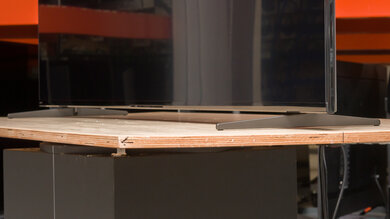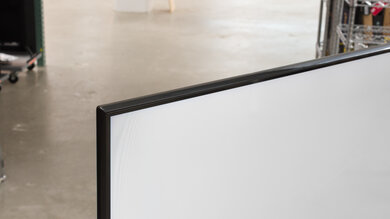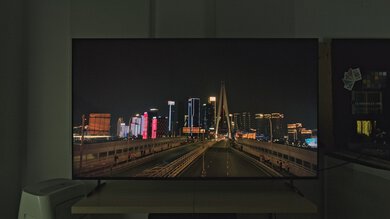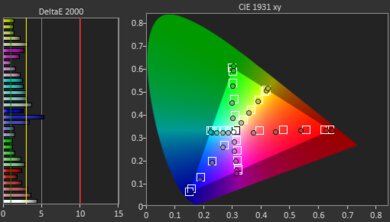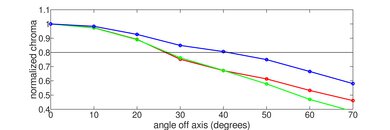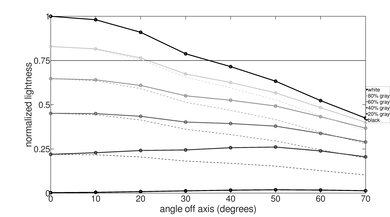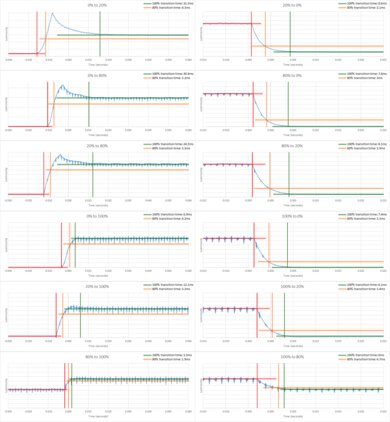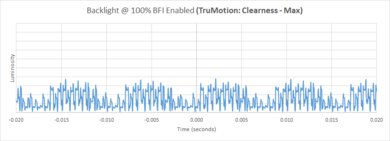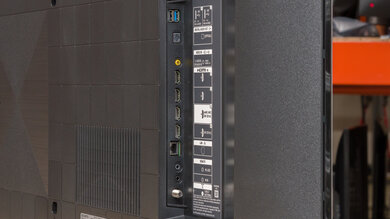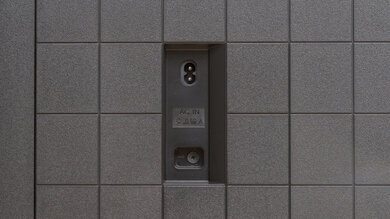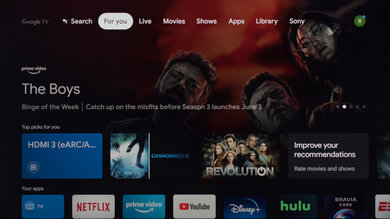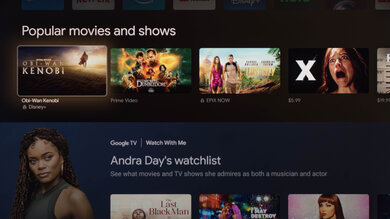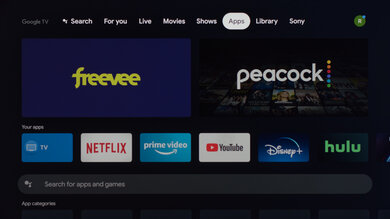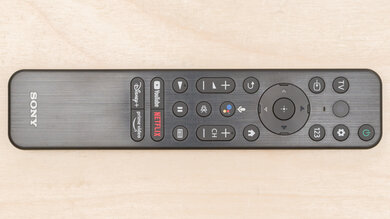The Sony X90K/X90CK is an upper mid-range 4k LED TV released in 2022. It sits above the Sony X85K and below the Sony X95K, and it's Sony's lowest-end model in 2022 to feature a full array local dimming feature. It's powered by Sony's Cognitive Processor XR for motion and picture processing. It comes with the Google TV smart platform built-in, which has a user-friendly interface with a ton of apps you can download, and you can use Google Assistant to search for content and easily open your favorite apps. It's available in a wide range of sizes, from 55 to 85 inches, so you can get the one that suits your needs. It has a few extra features for gamers, including HDMI 2.1 bandwidth and variable refresh rate (VRR) support to reduce screen tearing. It's been replaced in 2023 by the Sony X90L/X90CL.
Our Verdict
The Sony X90K TV is great for most uses. It's great for watching movies in a dark room thanks to its high contrast ratio and wide color gamut. It's also good for watching shows or sports in bright rooms with a couple of lights around, but it struggles a bit to overcome glare from bright lights or windows. It also has a narrow viewing angle, so it's not a good choice for a wide seating arrangement. It's great for gaming because it has HDMI 2.1 bandwidth for high-frame-rate gaming, variable refresh rate support, a quick response time, and low input lag for a responsive gaming experience.
- Excellent contrast ratio for deep blacks with just a bit of blooming.
- Excellent SDR peak brightness.
- User-friendly Google TV smart platform.
- Colors look vivid and pop.
- Struggles opposite really bright windows.
- Narrow viewing angle.
The Sony Bravia X90K is good for watching TV shows in a bright room. It has excellent peak brightness, so it gets bright enough to fight glare, but its reflection handling is just decent, and it's best to avoid placing it opposite really bright windows. It upscales lower-resolution content from cable boxes without issue, and the Google TV smart platform makes it easy to stream your favorite content. Sadly, it isn't a good choice for a wide seating arrangement because it has a narrow viewing angle, so the screen looks washed out from the sides.
- Excellent upscaling and sharpness processing.
- Excellent SDR peak brightness.
- User-friendly Google TV smart platform.
- Struggles opposite really bright windows.
- Narrow viewing angle.
The Sony X90CK is good for watching sports in a bright room. Fast-moving balls and players look smooth, thanks to the quick response time. It also performs well in rooms with a few lights around because it has excellent peak brightness to fight some glare, but it struggles if you place it opposite a really bright window. Unfortunately, it isn't a good choice for wide seating areas because it has a narrow viewing angle, meaning the image looks washed out from the sides.
- Excellent upscaling and sharpness processing.
- Excellent SDR peak brightness.
- Quick response time for smooth motion.
- Struggles opposite really bright windows.
- Narrow viewing angle.
The Sony Bravia XR X90K is impressive for gaming. It has a few gaming features like variable refresh rate support and HDMI 2.1 bandwidth, and it can take full advantage of the PS5 and Xbox Series X. It's also part of Sony's 'Perfect for PS5' lineup, which offers a few extra features for PS5 gamers that help automatically optimize your picture settings. Gaming feels responsive thanks to the low input lag and quick response time. It also looks good in dark rooms due to the high native contrast.
- Excellent contrast ratio for deep blacks with just a bit of blooming.
- Quick response time for smooth motion.
- HDMI 2.1 bandwidth.
- HDMI Forum VRR and G-SYNC compatibility.
- Low input lag.
The Sony X90K is great for watching movies in a dark room. It has an excellent contrast ratio, so dark scenes are uniform, with just a bit of blooming around bright highlights. It displays a wide range of colors in HDR, and it has great color volume, so colors are vivid and lifelike. It also displays native 4k content perfectly, and it removes 24p judder from any source, which helps with the appearance of motion in movies.
- Excellent contrast ratio for deep blacks with just a bit of blooming.
- Removes 24p judder from any source.
- Displays a wide color gamut.
- Colors look vivid and pop.
The Sony X90K is impressive for HDR gaming. Gaming feels smooth and responsive thanks to its low input lag, quick response time, and VRR support for a nearly tear-free gaming experience. It also supports 4k @ 120Hz gaming from the latest consoles and PCs. In terms of HDR, colors look vivid and pop thanks to the high peak brightness, and it displays deep blacks in dark rooms with just a bit of blooming around bright highlights.
- Excellent contrast ratio for deep blacks with just a bit of blooming.
- Quick response time for smooth motion.
- HDMI 2.1 bandwidth.
- HDMI Forum VRR and G-SYNC compatibility.
- Displays a wide color gamut.
The Sony X90K is great to use as a PC monitor. Your mouse movements and keyboard inputs feel responsive thanks to its low input lag and quick response time. It gets bright enough to fight glare in a moderately lit room, but the reflection handling is just decent, and it struggles a bit with bright lights or windows. It also displays proper chroma 4:4:4, which is essential for clear text from a PC. Sadly, it has a narrow viewing angle, and the image looks washed out at the edges if you sit too close.
- Excellent SDR peak brightness.
- Quick response time for smooth motion.
- Low input lag.
- Chroma 4:4:4 is displayed properly for clear text from a PC.
- Struggles opposite really bright windows.
- Narrow viewing angle.
Changelog
- Updated Sep 26, 2025: We uploaded the latest brightness measurements and uniformity photos for the Accelerated Longevity Test.
- Updated Jul 08, 2025: We uploaded the latest brightness measurements and uniformity photos for the Accelerated Longevity Test.
- Updated Apr 17, 2025: We uploaded the latest brightness measurements and uniformity photos for the Accelerated Longevity Test.
- Updated Feb 11, 2025: We uploaded the latest brightness measurements and uniformity photos for the Accelerated Longevity Test.
Check Price
Differences Between Sizes And Variants
We bought and tested the 65-inch Sony X90K, and it's also available in 55-inch, 75-inch, and 85-inch models. The results are valid for the other sizes, but the speakers perform differently on the 55 and 65-inch models than on the larger sizes. There's also an X90CK variant available in 55 and 65 inches at Costco, and it comes with a two-year warranty and two-year subscription to the Bravia Core Streaming service. In Europe, there are the X90K, X93K, and X94K, and although the results are valid for all three variants, the X93K and X94K are closer to the North American X90K because they have a built-in mic. However, the European X90K performs the same; it's just missing the built-in mic.
Finally, there's a smaller variant of this TV known as the Sony X90S and X94S. Both variants are only available in a 50" size and offer very similar performance to the larger sizes. There are a few differences between the X90S and X94S. The X94S comes with a more premium remote, the TV itself has a built-in microphone for hands-free voice control, and it has more picture processing options.
| Size | Model Number | Costco Model | Speakers |
|---|---|---|---|
| 50" | XR-50X90S | - | X-Balanced Speaker |
| 55" | XR-55X90K | XR55X90CK | Standard |
| 65" | XR-65X90K | XR65X90CK | Standard |
| 75" | XR-75X90K | - | X-Balanced Speaker |
| 85" | XR-85X90K | - | X-Balanced Speaker |
Our unit was manufactured in April 2022; you can see the label here.
Popular TV Comparisons
The Sony X90K is a great TV with a few gaming features and great overall picture quality. In a TV market with fantastic high-end TVs and budget models that provide good value, the X90K sits in between and doesn't provide much extra against other TVs like the LG QNED85 or the Hisense U8/U8H.
Also, see our recommendations for the best 4k TVs, the best smart TVs, and the best TVs for watching movies.
The Sony X90L/X90CL is a noticeable improvement over its predecessor, the Sony X90K/X90CK. The X90L gets a lot brighter, especially in HDR, so bright specular highlights stand out better. The X90L also has a much better local dimming feature, resulting in significantly less blooming around bright areas of the screen, deeper blacks, and smoother (but still not great) zone transitions.
The Sony A80J OLED and the Sony X90K are different types of TVs due to their different panel types. If you often watch content in a dark room, the A80J is the better choice as its OLED panel delivers deeper blacks. However, if you want to use it in a well-lit room to watch content in SDR, the LED panel of the X90K gets much brighter, so it fights glare better.
The Sony X90K/X90CK is a higher-end TV than the Sony X85K and is better overall. The X90K has a local dimming feature, which the X85K doesn't have, resulting in better overall picture quality because it displays deeper blacks and gets brighter, so highlights pop more in HDR. The X90K also uses a different processor with a few more features, like the S-Center speaker input, so if you want the best features and performance, the X90K is the better choice.
The Sony X95K is a higher-end version of the Sony X90K/X90CK, so it has better overall performance. If you need something for bright rooms with wide seating areas, the X95K has better reflection handling and a wider viewing angle. Even if the X90K has a higher native contrast ratio, the local dimming feature is better on the X95K, so it's also the better choice for viewing content in dark rooms as there's less blooming.

We buy and test dozens of TVs yearly, taking an objective, data-driven approach to deliver results you can trust. Our testing process is complex, with hundreds of individual tests that take over a week to complete. Most of our tests are done with specially designed test patterns that mimic real content, but we also use the same sources you have at home to ensure our results match the real-world experience. We use two main tools for our testing: a Colorimetry Research CR-100 colorimeter and a CR-250 spectroradiometer.
Test Results

The Sony X90CK has metal feet as the stand, and there are two positions you can put it in. The short position makes the TV sit very close to the table, but you can also raise the feet to place a soundbar in front without blocking the screen. The stand supports the screen well with minimal wobble, even in the raised position.
Footprint of the 65-inch TV: 46.3" x 13".
- Height to the bottom of the screen in lower position: 1.54" (3.9 cm)
- Height to the bottom of the screen in raised position: 3.31" (8.4 cm)
The North American variant has these two stand configurations, but you can also adjust the stand to a narrow position on the Sony X90K, X93K, and X94K models in Europe.
The back of the Sony X90K features textured plastic with some aluminum in the center. The inputs are set into the TV, so they're a bit hard to reach with the TV wall-mounted. Sadly, it doesn't feature any cable management.
The Sony Bravia X90CK has good build quality. It's well put-together, and there aren't any obvious issues with it. The bezels are uniformly attached to the screen, and the feet hold the TV well. There's some flex on the back panel near the inputs, which isn't much of an issue, and the rest of the back panel doesn't flex as much.
The panel has two dark spots that you can see in the Gray Uniformity photo, which is likely caused by pressure during assembly.
The Sony X90K Series has decent blooming handling. Due to the relatively large size of each zone, bright highlights create a large zone of blooming around them, especially since the TV seems to be averaging out bright highlights across more zones than necessary to reduce the harshness of the blooming. The amount of blooming also varies considerably depending on the content; you can see a few examples below:
| SDR | HDR |
| SDR 1 | HDR 1 |
| SDR 2 | HDR 2 |
| SDR 3 | HDR 3 |
| SDR 4 | HDR 4 |
| SDR 5 | HDR 5 |
| SDR 6 | HDR 6 |
| SDR 7 | HDR 7 |
| SDR 8 | HDR 8 |
| SDR 9 | HDR 9 |
| SDR 10 | |
| SDR 11 | |
| SDR 12 |
Unfortunately, zone transitions are easily noticeable on this TV. There's a noticeable flicker as bright highlights move across the screen and zones turn on, especially with fast-moving content. It can't keep up with really fast content, either, resulting in a trailing halo behind bright objects, and the leading edge is darker. If you're sensitive to lighting zone transitions, check out the Samsung QN85C/QN85CD QLED, which is much better in this regard. The replacement model to this TV, the Sony X90L/X90CL, has more dimming zones, and the zone transitions are less noticeable.
The Sony X90CK has just okay HDR peak brightness. Small highlights pop for a satisfying HDR experience, and even large areas are still bright. The replacement model to this TV, the Sony X90L/X90CL, gets significantly brighter in HDR, allowing it to display a more impactful image.
These measurements are after calibrating the HDR white point with the following settings:
- HDR Picture Mode: Custom
- Brightness: Max
- Contrast: 90
- Color Temperature: Expert 2
- HDR Tone Mapping: Gradation Preferred
- Peak Luminance: High
- Auto Local Dimming: High
The HDR Brightness in Game Mode is about the same as in the 'Custom' Picture Mode. Visually, there isn't much difference between the modes.
These measurements are after calibrating the HDR white point with the following settings:
- HDR Picture Mode: Game
- Brightness: Max
- Contrast: 90
- Color Temperature: Expert 2
- HDR Tone Mapping: Gradation Preferred
- Peak Luminance: High
- Auto Local Dimming: High
The EOTF follows the target curve incredibly well, meaning that most content is displayed at the correct brightness level in HDR. Shadow details are displayed incredibly well, with no noticeable black crush. Midtones are slightly dimmer than they should be, but it's not a noticeable difference, and there's a fine roll-off near the TV's peak brightness, ensuring that fine details in bright scenes are preserved.
The Sony X90CK has excellent SDR peak brightness. It easily gets bright enough to fight glare, even with large areas of bright colors, like on a webpage or sports.
These measurements are after calibration, with the following settings:
- Picture Mode: Custom
- Brightness: Max
- Contrast: 90
- Color Temperature: Expert 1
- Peak Luminance: High
- Auto Local Dimming: High
The Sony X90K has a great color gamut. It has fantastic coverage of the DCI-P3 color space used in most HDR content and decent coverage of the wider Rec. 2020 color space. Tone mapping is good with both color spaces. However, it struggles with some saturated greens in the Rec. 2020 color space.
The overall color volume of this TV is great. It displays most bright colors well, but some colors like red and blue aren't as bright. It also displays dark colors well, but it's limited by its incomplete color gamut.
The Sony X90K has decent accuracy before calibration. Most colors are accurate enough that you won't see any issues, but the color temperature is a bit cold, giving the screen a bit of a blue tint. Also, the white balance is off, particularly with shades closer to pure white. Luckily, gamma follows the 2.2 target well, so scenes appear at their correct brightness.
The Sony X90CK has incredible accuracy after calibration. There are virtually no noticeable inaccuracies with the white balance, gamma, and color temperature. It still struggles displaying saturated blues, but that's typical of LCD panels.
You can see our full calibration settings here.
The gray uniformity is just okay. There's a bit of vignetting in the corners, and the center has some distracting dirty screen effect. There are two visible spots on our TV, but they're unique to our unit and aren't noticeable with real content.
The Sony X90K has decent reflection handling. It's fine if you have some lights around, and it gets bright enough to fight some glare, but avoid using it opposite a bright window because the reflections are distracting.
This TV has excellent gradient handling in HDR. There's some noticeable banding in bright shades of green, but everything else looks great.
This TV uses a BGR subpixel layout. It doesn't affect picture quality but can cause blurry text in some applications when using it as a PC monitor. You can read more about it here.
This TV has an optional backlight strobing feature, commonly known as black frame insertion. It's meant to flicker at 120Hz, which causes image duplication, but it has a strange pattern to match the standard 720Hz flicker of the backlight. It doesn't flicker at 60 fps for 60Hz content, which also causes image duplications.
The Sony X90K can interpolate lower-frame-rate content up to 120 fps. It works well with slow scenes, but like most TVs, it struggles to keep up in busier scenes. It doesn't stop interpolating with busy scenes, meaning there are artifacts throughout the screen, but the framerate remains stable.
Due to the relatively quick response time of the Sony X90K, some lower-frame-rate content stutters because each frame is held on longer.
The Sony X90K removes 24p judder from any source, which helps with the appearance of motion, particularly with movies. No additional settings are required for true 24p sources like a Blu-ray player or any streaming stick with a 'Match Frame Rate' feature, but some motion interpolation settings are needed for 60Hz sources like a cable box.
The Sony X90K supports variable refresh rate technology to reduce screen tearing. HDMI Forum VRR and G-SYNC compatibility work over the entire refresh rate range.
The Sony X90CK has low input lag in Game Mode for a responsive feel. You can enable the motion interpolation in Game Mode, but it also increases the input lag too much for gaming.
The Sony X90K supports most common signals up to 4k @ 120Hz. Unlike some older Sony TVs, this TV has no resolution-halving issues with 4k @ 120Hz signals, so it displays it perfectly. Chroma 4:4:4 signals are displayed properly with 1080p and 4k signals up to 120Hz, which is important for clear text when using it as a PC monitor.
The Sony X90K supports almost everything the PS5 has to offer. As part of Sony's 'Perfect For PS5' lineup, it has a few extra features for PS5 gamers that automatically adjust your picture settings, so you get the best experience possible.
The Sony X90CK supports full bandwidth HDMI 2.1 of 48 Gbps, as you can see here. However, because HDMI 3 is an HDMI 2.1 and eARC port, you lose an HDMI 2.1 slot if you connect a receiver, so you can't connect multiple HDMI 2.1 devices unless the receiver supports it. The TV also supports ATSC 3.0, allowing you to stream over-the-air channels with up to a 4k resolution.
This TV doesn't have an Analog Audio Output, so you can't connect your headphones or basic speakers that use an analog connection. However, you can connect your sound system to the TV with the port label S-Center Speaker In and use the TV's speaker as a center speaker.
This TV supports eARC, allowing you to pass high-quality, uncompressed audio to a compatible receiver through an HDMI cable.
The Sony X90K has a decent frequency response. It gets loud with a well-balanced sound profile, which is important for listening to dialogue. However, it doesn't produce much bass, so get a soundbar or a dedicated surround sound setup for the best sound possible. The 75- and 85-inch models have different speakers and perform differently.
The distortion handling is decent. There's minimal distortion at moderate listening levels, but it gets more noticeable at the max volume.
The Google Play Store has tons of apps available, and they run very smoothly. It has Google Chromecast built-in, meaning you can cast content from your phone. You can also connect to the Bravia webcam for video calls.
The Sony X90K comes with the redesigned Sony remote for 2022 that doesn't have a Numpad. Instead, the '123' button brings up a virtual Numpad on the screen. It has shortcut buttons to popular streaming services and has a built-in mic for voice control, and you can ask it to change inputs, change certain settings, and search for content. The TV also has a mic built-in for hands-free voice control.



